 
 
|
|
Longues-Sur-Mer Battery
Wednesday, June 06, 2001; posted by Paris
In the afternoon, we drove down the coastal highway to Longues-Sur-Mer gun battery. There are four casemates with their original 152mm naval guns. The casemates are in a semi-circle to maximize their firing arc, which allowed them to bombard the American and British forces on Omaha and Gold beaches. They could also fire nearly 13 miles out to sea. The casemates are located 300 meters inland from the control bunker (which is right on the cliff's edge).
The casemates were made of reinforced concrete and designed to withstand aerial attack (the walls were 6.5 feet thick). They sat on giant concrete slabs so they would not tip over if subjected to a near hit. However, they were vulnerable from the front - the 10mm thick armor plating had been pierced by Allied ships during the invasion. The designers attempted to protect the guns and crews by building a concrete canopy (the Todt front) which jutted out beyond the roof.
On 6 June 1944 the battery was repeatedly bombed during air-raids, but the guns remained in action, although communications were knocked out. Ships in the Channel opened fire and an exchange between the battery and various ships took place on and off throughout the day. Eventually the Allied ships silenced the guns and the 184 members of the battery surrendered to British troops.
|
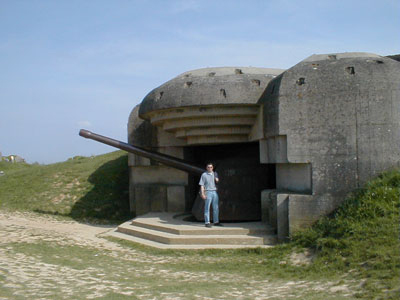 |
Me standing next to a casemate. All of these are open, and I was able to walk in and sit in one of the two gunner's seats.
|
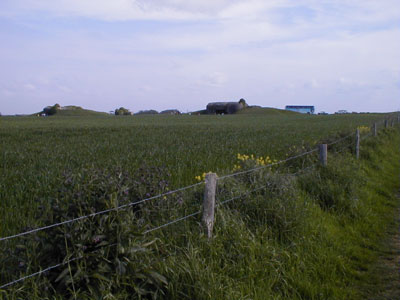 |
A view from the observation bunker toward two of the four casemates.
|
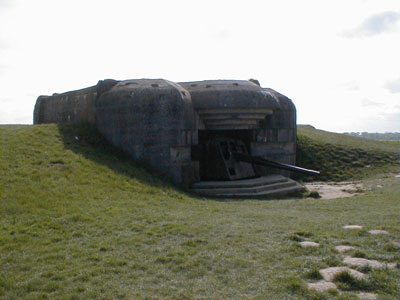 |
Notice the earth piled (bursting layer) up along the sides of the casemate. This used to absorb the shock of explosions and make the casemates less visible from the air and sea.
|
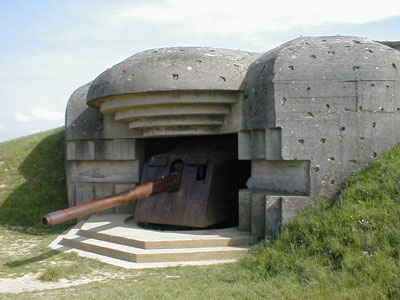 |
Casemates were guarded by machine gun nests to repel any ground attacks. The small pits created in the concrete were filled with earth and grass to help blend the fortifications in with the surroundings. Hooks can be seen on the bunkers which were used to attach camouflage netting.
|
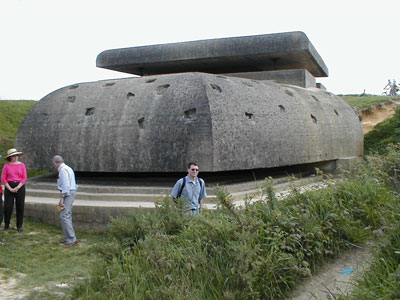 |
This is the control bunker, buried on the edge of the cliff face. Enemy targets were sighted here and then communicated back to the crews in the casemates (by telephone linked by cables buried deep underground - but were cut by 21 foot deep bomb craters). The cliff face had not been removed (where I am standing) at the time of the invasion. The bunker was still under construction and in order to conceal the activities, the dirt was not to be removed until completion of the complex.
|
 |
This is looking at the back of the control bunker and out into the Channel. On the day of the invasion, the crew had to do manual range finding from the top deck (to see over the dirt mound) and tried various methods to communicate with the gunners while under siege.
|
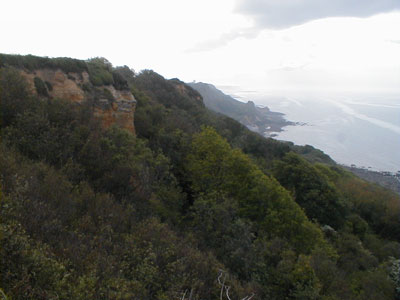 |
This is a view looking left from the observation deck looking down on Omaha beach. Gold beach is in the opposite direction to the right.
|
|






